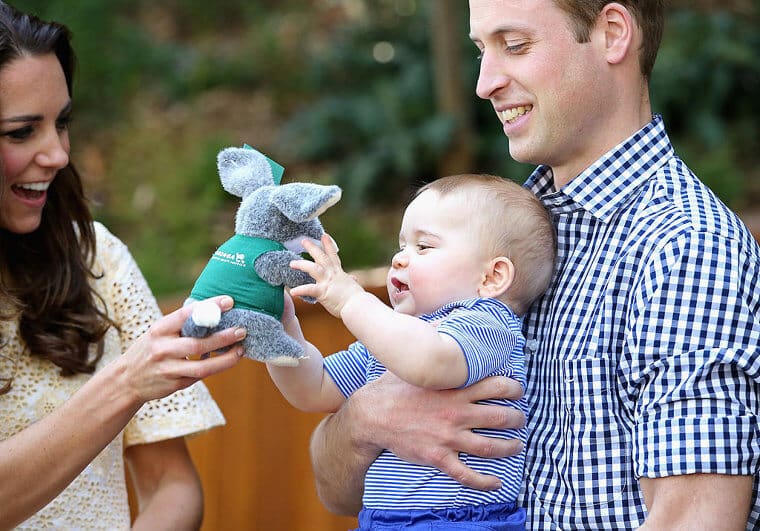Growing up as a regular kid is simple, but for the youngest members of the British Royal family, life comes with a myriad of rules. Being an heir to the throne may seem glamorous, but it involves strict protocols, dress codes, and lifelong rules—unless, of course, you make a dramatic exit like Prince Harry and Meghan Markle. Dive into the peculiar regulations and unknown truths that shape the daily lives of the royal family.
Strict No-Nonsense Training Starts at Just Two Years Old

Royal children begin learning numerous customs from a very young age, with curtseying to the sovereign being just one aspect. Etiquette training can start as early as two years old, covering everything from public behavior to formal greetings. The training is comprehensive, including lessons on posture, handshakes, and guidelines on acceptable conversation topics versus taboo subjects. This extensive training can continue for several years, shaping the way royal children conduct themselves in various situations.
They Must Accept Gifts but Don’t Actually Get to Keep Them

Receiving gifts may not seem like a big deal for royal children, but there’s a strict rule in place for how they should react. Despite being showered with numerous gifts from strangers each year, royal children are expected to accept them gracefully to avoid appearing rude or snobbish. However, there’s a catch – they can only keep the gift under a specific condition.
Royal Children Can’t Eat the Same Food as Regular Children

Being part of the Royal Family comes with the perk of having chefs on hand. However, there are strict guidelines on what the royal children are allowed to eat. Processed or pre-packaged food is a no-go, though the occasional box of organic apple juice may be allowed. Their diets are decided for them, contributing to the development of a refined palate from a very young age.
The Queen Banned the Kids From Playing Monopoly Because They Fought Too Much
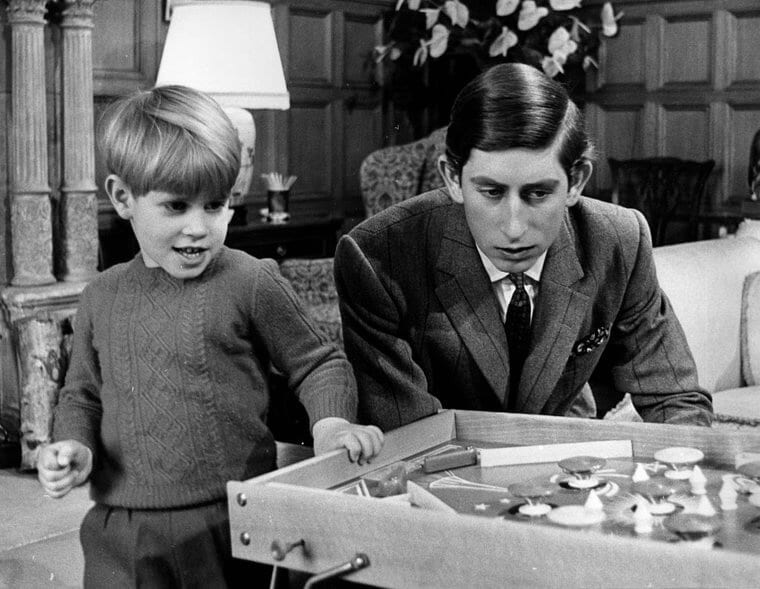
While kids often enjoy playing various games, there’s one particular board game that’s off-limits for the royal children – Monopoly! The oddly specific rule stems from the game’s reputation for causing arguments within the Royal Family. With lying, cheating, and accusations involved, the monarchy has put a firm stop to Monopoly, ensuring that the new generations won’t be playing this game within the royal household.
Girls Must Only Wear Knee-Length Dresses
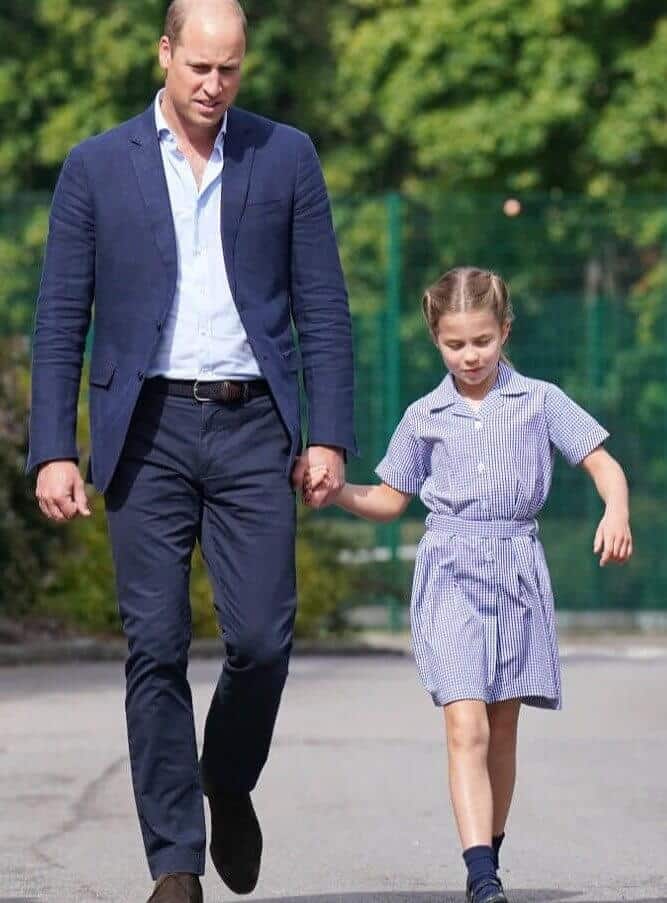
Members of the Royal Family, including young girls like Princess Charlotte, are always impeccably dressed. For these young princesses, choosing outfits is somewhat simplified as they are expected to wear dresses that end around the knee. It’s a rare sight to see Princess Charlotte in shorts or pants, as this is generally looked down upon. While exceptions are made for special occasions or private settings, the expectation for a polished appearance is a constant.
They Must Behave in Public at All Times

Even as young children, royal heirs are expected to exhibit impeccable behavior, as they may one day ascend to the throne. They are held to a higher standard of manners compared to average kids. Public meltdowns are frowned upon, and this is where their early etiquette training comes into play. The young royals are expected to remember and apply all they’ve been taught, displaying utmost respect even in challenging situations. This code of behavior extends to their private lives as well, maintaining decorum behind closed doors.
Two Heirs Cannot Travel Together so the Throne Is Always Protected

Due to the potential risks associated with air travel, a rule exists that prohibits two direct heirs from flying together on the same flight. This precaution is in place to safeguard the lineage. If an unfortunate incident were to occur, and an heir were to pass away while traveling, the next in line would be expected to assume their role. This protocol is strictly enforced, but it stirred controversy when Prince William broke tradition by flying with his son, Prince George. Despite Prince George being just a child, this departure from the rule was met with disapproval.
Even the Young Kids Are Expected to Be Present at the Most Boring Events

While the schedules of young royals may not be as hectic as those of their parents and older family members, they are still expected to attend various events. Princess Charlotte and Prince George, for instance, have accompanied their parents on official royal tours. As they grow into pre-teens and young adults, they will be increasingly expected to participate in walkabouts and engage in charity events regularly. This adherence to guidelines for royal children is part of their future responsibilities within the monarchy.
They’re Not Allowed to Wear Black During the Day

It might seem peculiar for kids to have a color restriction, but traditions often persist for generations. In the case of royal children, wearing black outfits is generally reserved for daytime mourning. There has been only one exception noted when Prince George wore an all-black military suit to a wedding. Typically, black attire is strictly reserved for funerals unless it’s a special occasion.
Archie Was Expected to Receive a Title When He Was Born

The absence of an immediate title for Prince Harry’s first-born son, Archie, sparked significant controversy and discussion. While William and Kate’s children—George, Charlotte, and Louis—already have titles, Archie’s situation is distinct. Harry and Meghan claimed they requested a title for him but weren’t granted one, resulting in his name being Archie Harrison Mountbatten-Windsor. Whether his title will change in the future remains unclear.
Boys Must Wear Only Shorts to Show They’re High-Class

While it’s well-known that the Royal Family adheres to a strict dress code, the specific details regarding what the children can wear might be less familiar. For royal boys, there’s a peculiar rule: they are to wear shorts until the age of eight, after which they can transition to trousers. While this may seem arbitrary, the rule has historical roots and is part of the traditional dress code for young boys in the royal lineage.
They’re Not Allowed to Ever Eat Shellfish

While the young members of the British Royal Family enjoy relatively healthy diets that include treats like ice cream and dining out, there’s one item that is strictly off-limits. Not only are royal kids discouraged from consuming it, but the entire Royal Family avoids it—shellfish. You won’t find shellfish on the menu for any royal meal due to the higher risk of allergies and food poisoning associated with these types of seafood.
Young Princesses Can’t Wear Tiaras Until They’re Married

In the British Royal Family, the tradition is that only those who are married are permitted to wear a tiara. Despite holding the title of Princess of Cambridge, Charlotte is currently forbidden from donning the fancy headgear. However, with the passing of the Queen and Prince Charles becoming King, Lilibet, who technically holds the title of princess, would also be subject to this rule once she is of age. It’s a peculiar tradition that ties the wearing of tiaras to marital status within the royal protocol.
All Royal Children Must Wear This Gown From the 19th Century
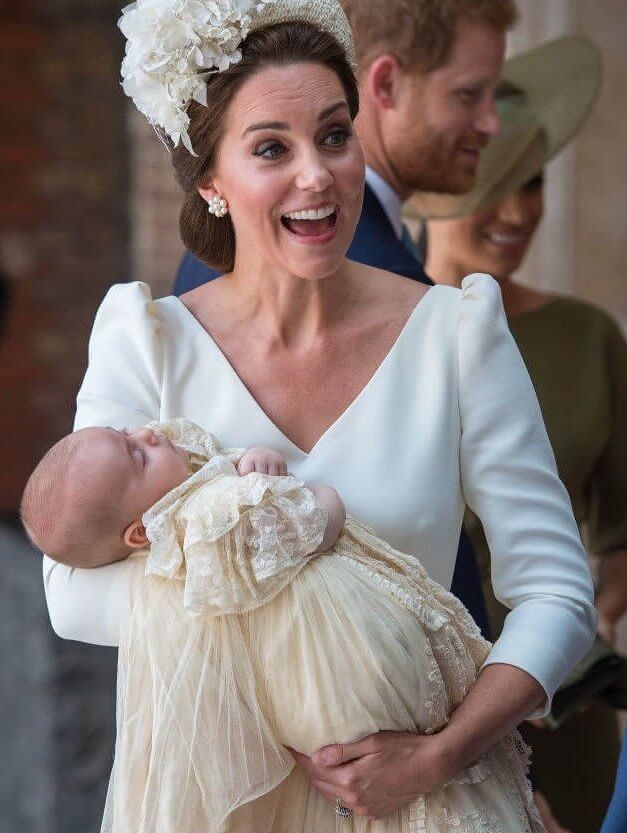
Indeed, one of the early events in the life of a royal baby is their baptism, and there is a specific dress code even for this newborn. A longstanding tradition in the Royal Family, dating back to the days of Queen Victoria, is to baptize babies in the Honiton christening gown. This garment holds such significance that a replica has been created, ensuring that future generations of royals can continue to wear it during their baptisms.
Playdates Require Top-Notch Security

While royal kids, like any other children, would likely enjoy hanging out with their friends, being part of royalty adds extra steps before a playdate can happen. Before other kids and their parents can visit for a playdate, they must undergo a thorough vetting process by security. Although it might seem like playdates are out of the question, as long as specific protocols are followed, royal kids can indeed make friends and enjoy playdates much like any other child.
They’re Not Allowed to Express Any Personal Opinion

An important rule for members of the Royal Family is to remain impartial at all times. However, on occasion, this rule is broken, even though it is highly discouraged and frowned upon. Prince William and Princess Kate faced criticism when they dressed their son, Prince George, in an England soccer jersey. This was seen as a breach of royal protocol, as it indicated a clear affinity for a specific sports team, which goes against the impartiality expected of the royal members.
The Young Royals Have to Greet the Public With a Special Wave

Among the many traditions upheld by the famous British Royal Family, the Windsor wave is a notable one. Even as young children in the family, they are taught this specific wave to use when greeting the public. The wave is designed to prevent any strain or injury to their wrists caused by constant waving. The gesture ensures that the royal members can engage with the public without risking any harm to their hands.
The Royal Boys Must Serve in the Military

Entering the military has been a longstanding tradition for boys in the British Royal Family. Notably, Prince Harry, Prince William, and their father, Prince Charles, all served in the military. Following this tradition, Prince William’s sons, George and Louis, are expected to follow in their footsteps. Despite being 9 and 4 years old, the expectation is that they will join the military when they come of age, demonstrating their dedication to their country.
The Royal Kids Don’t Open Any Presents on Christmas Day
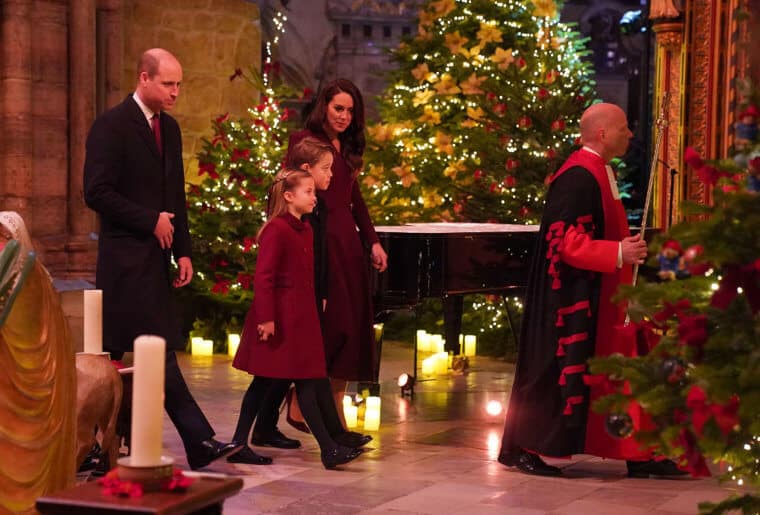
The Royal Family follows the German custom of opening presents on Christmas Eve rather than on Christmas Day. While this may seem unusual to many, it means that they get to unwrap their gifts before most children who typically open theirs on Christmas Day. In that sense, the Royal Family might consider themselves fortunate to enjoy their presents a bit earlier during the holiday season.
7-Year-Old Charlotte Could Receive the Princess Royal Title

Princess Charlotte holds a unique position in the Royal Family. There is a specific title, Princess Royal, reserved for one person at a time, typically the eldest daughter of the Sovereign. Currently, Princess Anne holds this title, but Charlotte is next in line. If she were to become Princess Royal, it would be a historical moment since Princess Anne has held the title since 1987. In this context, Charlotte would only be the eighth person to assume the role of Princess Royal.
Archie and Lillibet Can Still Receive Royal Treatment Despite Living in California

Despite Prince Harry and Meghan Markle stepping back from their royal duties, their children, Archie and Lilibet, remain part of the royal family and are still in the line of succession for the throne. While there are many other members ahead of them, if the need arises, they would still be expected to fulfill their roles in the monarchy. Even though they currently live at a distance from royalty, the expectation remains based on traditional customs.
Even the Youngest Royals Have Their Own Security Guards
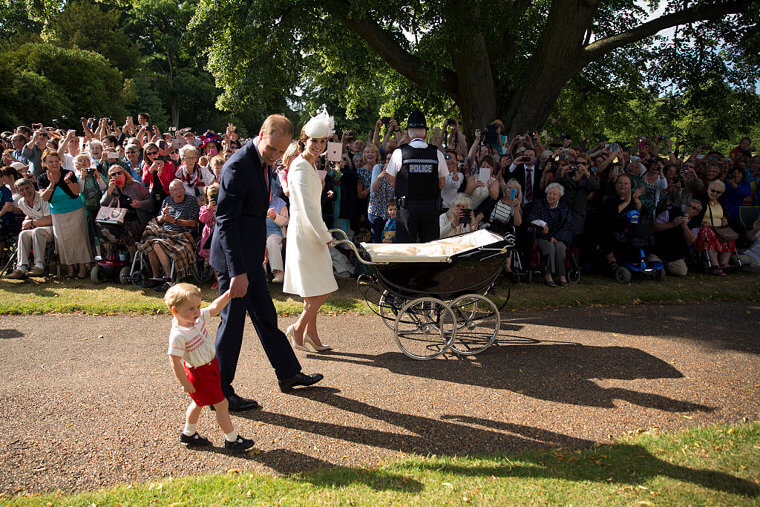
Being a part of the Royal Family is an honor, but it also comes with its risks. Security, especially for the children in the family, is of utmost importance. Past incidents of attempted kidnappings highlight the need for stringent security measures. As a result, children like Prince George and Princess Charlotte already have personal security that accompanies them wherever they go. While the high level of security may seem stringent, it is an essential protocol to ensure the safety of the royal children.
You Must Learn to Curtsy as Soon as You Start Walking

Despite the typical expectations for toddlers or young children to engage in playful mischief, the standards for young members of the Royal Family are quite high. Starting at the age of five, they are expected to learn and execute a curtsy whenever they greet the king or queen. Just like other family members, these royal children are required to adhere to this protocol, showcasing the formality and tradition that comes with their royal roles.
They’re Expected to Speak Multiple Languages

Many royal children have the opportunity to study multiple languages besides English. While not a strict rule with repercussions, it is a strongly encouraged tradition within the Royal Family. This practice is inspired by the late Queen’s fondness for the French language. Prince Charles, Prince William, and Kate also speak French. The tradition persists, as they began teaching their children Spanish when Prince George was only around two years old, emphasizing the importance of multilingualism within the royal household.
They Were Not Allowed to Call the Queen “Grandma”

Regarding your statement about royal grandchildren and great-grandchildren being forbidden from calling the Queen “grandma,” I cannot verify the accuracy of this specific detail. However, it’s known that members of the Royal Family often use titles or more formal terms when addressing each other, and the use of personal names or casual titles may be subject to certain protocols. The specifics can vary within the family, and traditions may evolve over time.
Their Childhood Is Spent in the Most Luxurious Properities

Royal children indeed have access to luxurious and sought-after properties from the moment they are born. For example, Prince William and Kate Middleton, along with their children, resided in Kensington Palace. The living conditions for the royal family, including the children, are often grand and opulent. These properties often come with numerous rooms, providing the young royals with an extravagant living environment. Just like Prince William and Prince Harry experienced fancy playrooms in their childhood, the current generation of royal children has access to similarly lavish spaces within these historic residences.
Even the Royals Need a Driver’s License to Drive

While Queen Elizabeth II was exempt from holding a driver’s license, a privilege unique to the monarch, the royal children are not afforded the same exemption. Despite being members of the royal family, they are expected to follow the same rules as other UK citizens. This includes studying for and taking a driving test to earn their licenses. Prince George and Prince Louis, like other individuals in the United Kingdom, will have to pass a driving test when they come of age, adhering to this custom and regulation.
Sending Royal Kids to School Is Extremely Expensive

A longstanding custom in the Royal Family is education by private teachers and tutors. However, starting with Prince Charles, it became customary for royal children to attend actual schools. Princess Charlotte, Prince George, and Prince Louis all attend private schools that come with considerable fees. The cost of their education involves thousands of pounds per child per semester, reflecting the expense associated with receiving a prestigious and comprehensive education.
Princess Charlotte’s Chances of Becoming Queen

Traditionally, the line of succession in the British Royal Family favored male heirs over their female siblings, regardless of age. However, the Succession to the Crown Act was indeed passed in 2013, marking a significant change in the rules. This act abolished the system of male-preference primogeniture, ensuring that a female heir would not be displaced in the line of succession by a younger male sibling. As a result, Princess Charlotte now has an equal chance at the throne compared to her younger brother, Prince Louis, reflecting a more gender-neutral approach to royal succession.
Royal Children Still Need Passports to Travel

Royal children indeed enjoy various privileges, including the opportunity to travel the world. As a part of their royal status, they are issued passports the moment they are born. While the Queen and King may not require passports for travel, these documents are important for the royal children, especially as they often accompany their parents on international tours. Despite their unique position, having passports allows the royal children to fulfill their duties and engage in diplomatic visits around the world.
Where the Queen’s Great-Grandchildren Stand in the Rankings
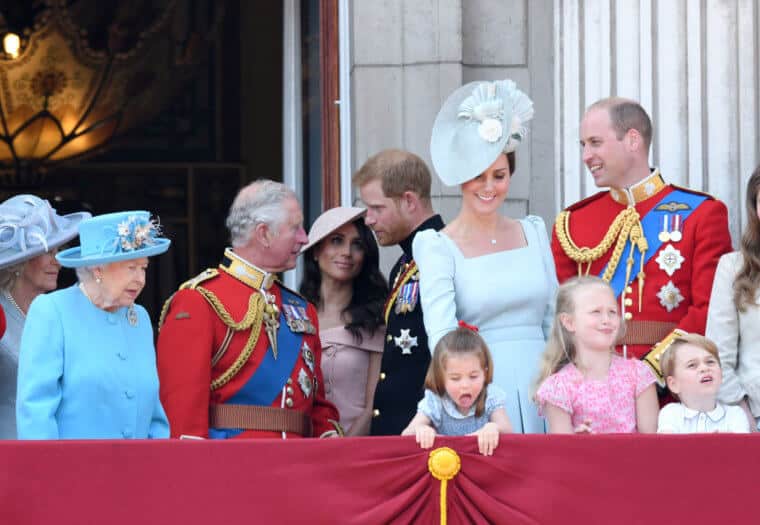
As of my last knowledge update in January 2023, Queen Elizabeth II was still the reigning monarch. If there have been changes to the line of succession since then, I would not be aware of them. Please verify with up-to-date sources for the latest information on the British Royal Family and the line of succession. As for the possibility of Prince Harry’s children being in line for the throne, the line of succession typically includes descendants of the monarch. If there have been changes or updates, the most recent and reliable sources should provide that information.
Diana Really Tried to Give Her Children a Normal Life

Princess Diana indeed emphasized the importance of providing her children, Prince William and Prince Harry, with a somewhat normal childhood despite their royal status. She aimed to shield them from the intense public scrutiny and pressures that came with their positions. Diana took her sons on various excursions, such as visits to theme parks and skiing trips, allowing them to experience everyday activities and enjoy a sense of normalcy. Her approach to parenting was widely recognized and appreciated for breaking away from some traditional royal norms, prioritizing the well-being and happiness of her children.
Royal Kids Can Expect Their Titles to Change Throughout Their Lives

Indeed, the titles of children in the Royal Family can evolve over time, especially as they move closer to the throne. Prince George, being the firstborn of Prince William, is likely to inherit titles such as Duke of Cambridge from his father as part of the customary practice. In the Royal Family, it’s common for members, especially those in direct line to the throne, to use their titles rather than traditional last names. This reflects their status and position within the monarchy.
William and Kate Encourage Their Kids to Be in Nature Like Normal Kids

Prince William and Kate Middleton indeed recognize the importance of providing their children, Prince George, Princess Charlotte, and Prince Louis, with opportunities for a semblance of normalcy despite their royal status. While their lives are characterized by honor and privileges, the parents aim to incorporate aspects of ordinary life. Encouraging their children to be in nature and experience everyday activities is one way to instill a sense of balance and a connection with the world beyond the royal duties and protocols. These efforts reflect a commitment to blending royal traditions with a desire for a well-rounded and grounded upbringing for their children.
Royal Kids Receive so Many Perks While Traveling That Never Go Away

As royal children grow and reach a certain age, it is not uncommon for them to start traveling separately from their parents, including their father. The perks of royal travel are indeed exceptional. Members of the Royal Family, including the children, often travel in first class and, when deemed necessary, may have access to private jets. This tradition reflects the distinction and privileges associated with royalty, as such luxurious modes of travel are not typically accessible to the general public. Private jets contribute to the security, comfort, and efficiency of royal travel.
The Birth of a Royal Child Must Be Announced to the Public
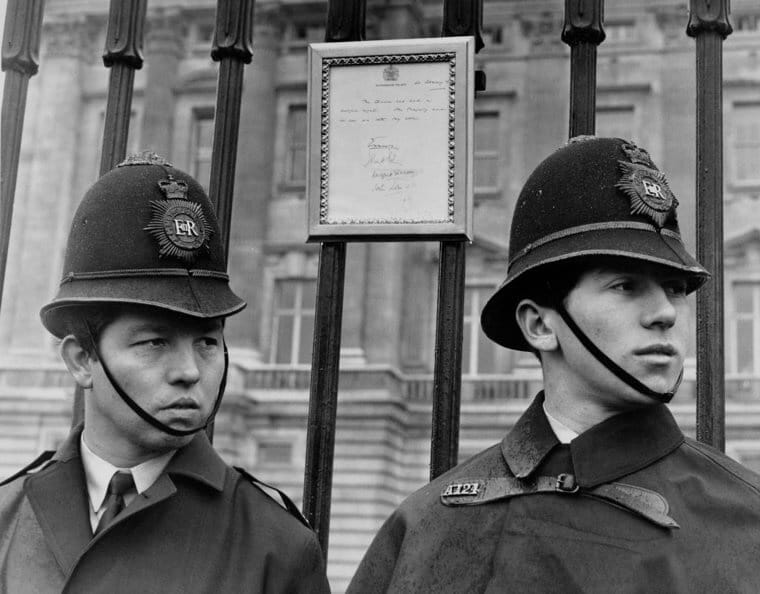
When a royal baby is born, there are indeed immediate expectations for the announcement of details. It’s a longstanding tradition that the news of the royal birth is promptly shared with the public. A sign is typically placed outside Buckingham Palace, providing information on how the birth went, the gender, and the name of the newborn. This public announcement is part of the royal protocols, maintaining a level of transparency and tradition that has been followed for generations.



